Dunnottar Castle is a striking and evocative ruined fortress located on the northeastern coast of Scotland, near the town of Stonehaven in the Grampian region. Perched on a rugged headland that protrudes into the North Sea, the castle is flanked by sheer cliffs that drop dramatically to the water below, providing a natural defense and a breathtaking setting that has captivated visitors for centuries.
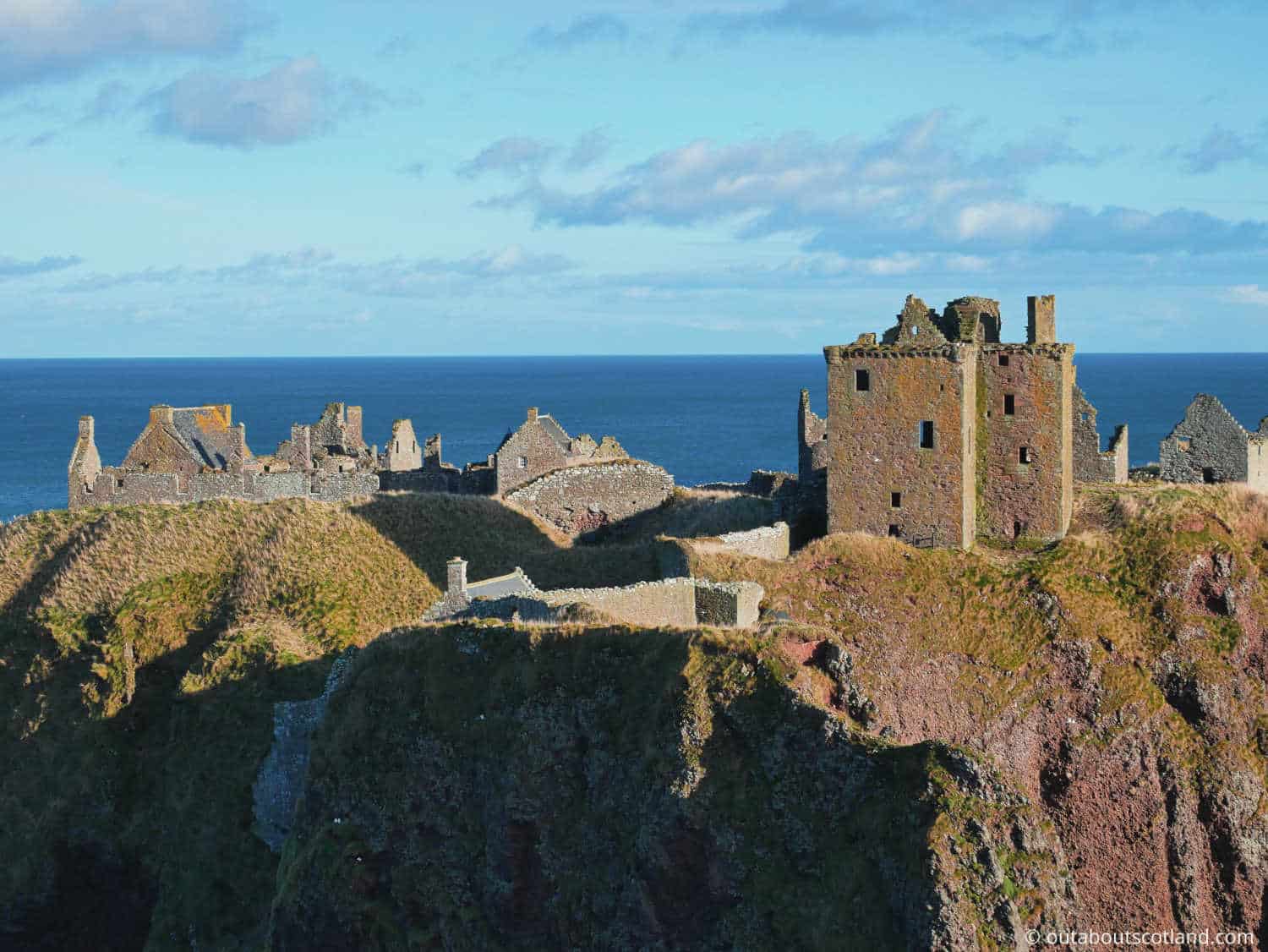
| Address: | Dunnottar Castle, Stonehaven, AB39 2TL |
| Opening Hours: | 1st Apr - 30th Sep 09:00 to 18:00 1st Oct - 29th Oct 10:00 to 17:00 30th Oct - 28th Jan 10:00 to 15:00 29th Jan - 25th Feb 10:00 to 16:00 26th Feb - 31st Mar 10:00 to 17:00 |
| Admission Price | Adult – £9.50 Concession (age 65+) – £8.50 Child (age 5 – 15) – £4.50 Family (2 adults + 2 children) - £23.50 Guide book – £5 Adult Annual Pass – £22.50 Child Annual Pass – £10 |
| Parking: | Free on-site car park |
| Contact: | +44 (0) 1569 766320 |
| Facilities: | Bike rack, toilets, refreshments |
| Photos: | Virtual Tour YouTube Video |
Overview
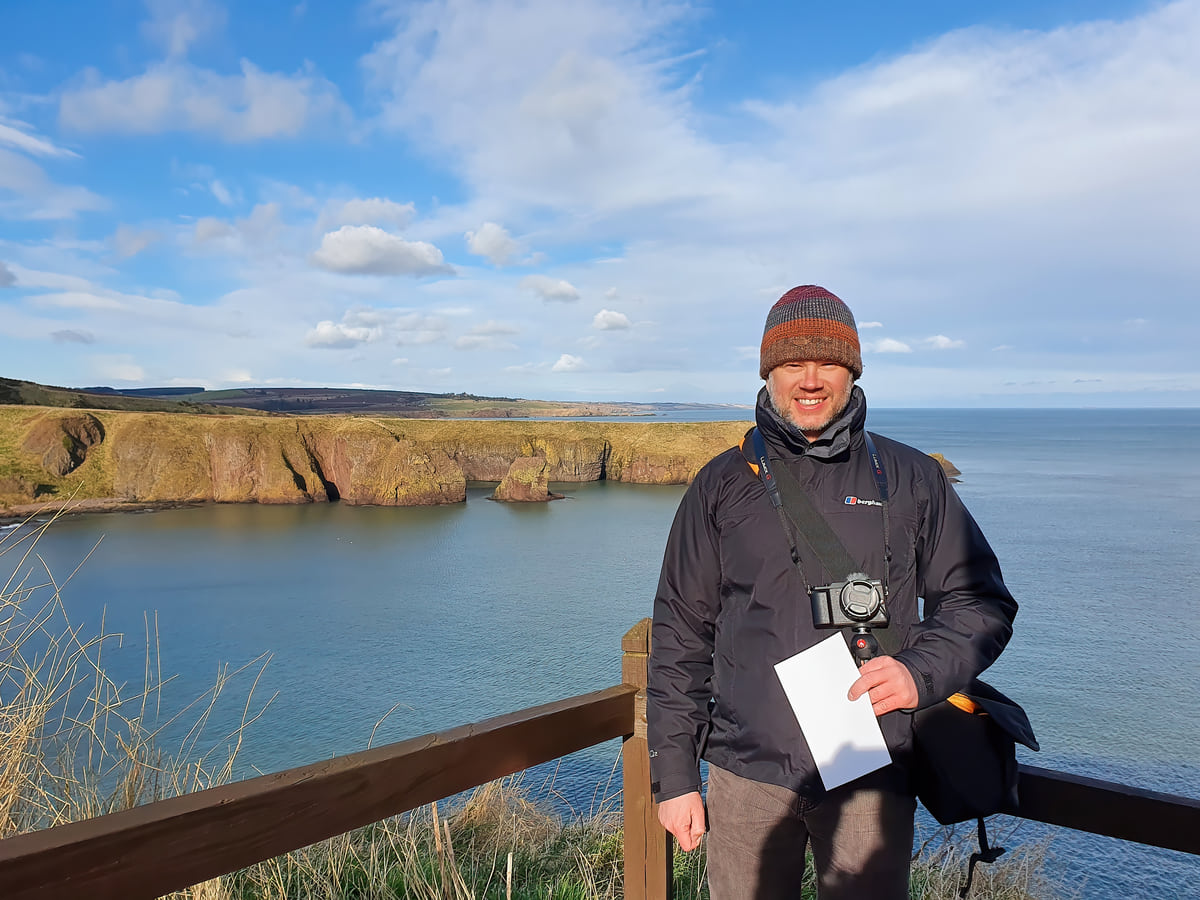
Dunnottar Castle is an imposing fortress dating from the 1400s. Its history is fascinating, featuring tales of sheltering the Scottish Crown Jewels from invading armies and hosting Mary, Queen of Scots. Today, its ruinous buildings offer a fascinating glimpse into Scotland’s turbulent past, attracting tourists from near and far.
As imposing as Edinburgh Castle and as atmospheric as Eilean Donan Castle, Dunnottar beats them hands-down when it comes to dramatic settings thanks to its location on a precarious clifftop overlooking the pounding waves of the North Sea.
You’ll find this instantly-recognisable landmark by following the A90 or A92 on the northeast coast, around 20 miles south of Aberdeen. As soon as you’re near the old fishing town of Stonehaven, you’ll see brown tourist information signs pointing to the clifftop site of Dunnottar Castle, which lies at the end of a minor road that is part of Aberdeenshire’s coastal tourist route.
Once you get to the car park, you’ll see why this location was chosen for the fortress. The coastline is shielded along the entire length of the seaward side thanks to fifty-metre cliffs that are almost vertical in places. The landward side, meanwhile, is relatively flat and open and would have offered little protection to anyone foolish enough to mount an attack.
In addition, the 440-million-year-old promontory on which Dunnottar Castle sits is perched slightly out into the sea with just a narrow strip of land joining it to the headland, which means access is only possible by climbing a winding 200-step staircase to the entrance. If there’s a better-positioned castle in Scotland, I’ve yet to see it.
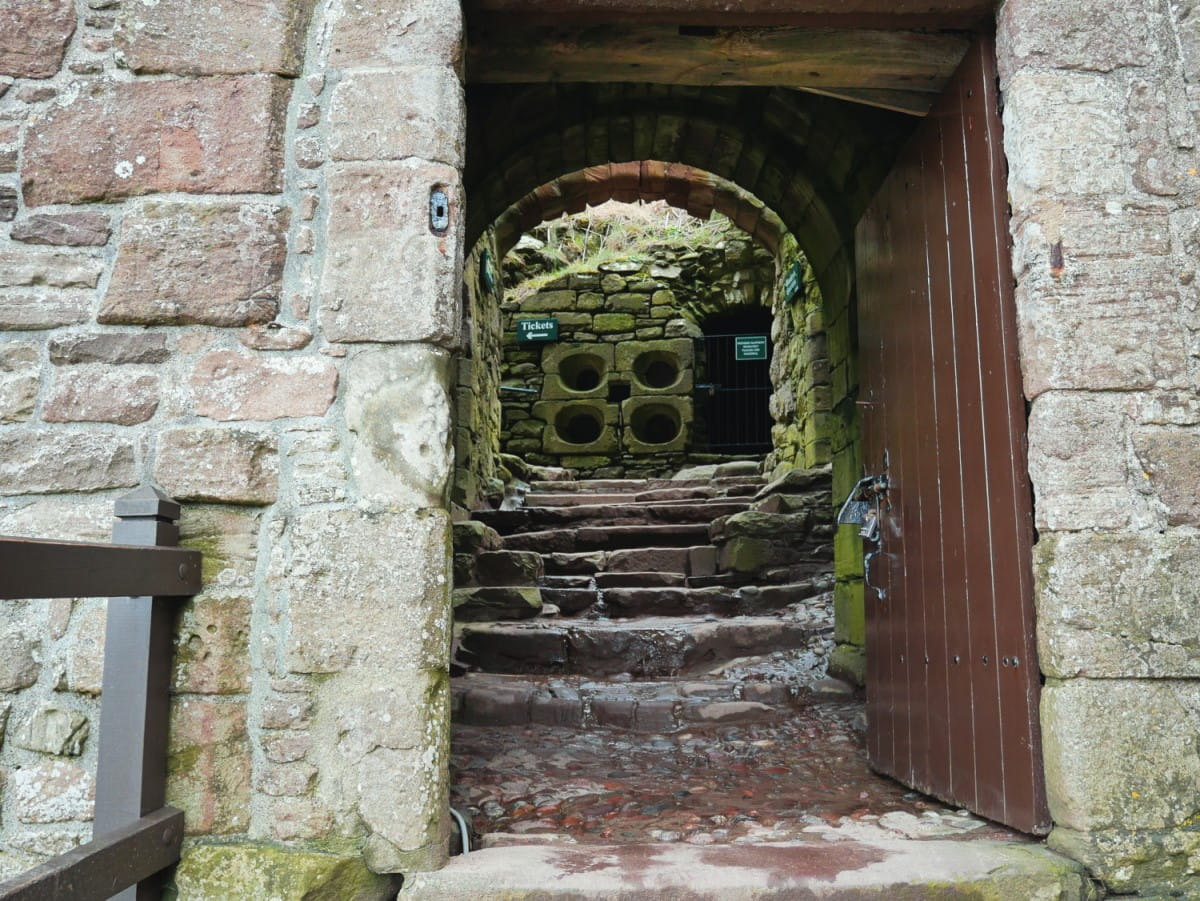
Although it would have been jaw-droppingly impressive in its heyday six hundred years ago, it was abandoned in the 1700s and left to fall into ruin until the early 1900s, when restoration work began. What we see today is mostly just a collection of roofless buildings, although some sections like the ‘quadrangle’ have been completely renovated.
There’s also a large tower house that’s surprisingly intact considering how much damage it must have taken from centuries of abuse by the Scottish weather and invading armies, and there are a few (rather creepy) underground vaults that were used as prisons and storerooms.
But it’s the setting that’s the real draw for visitors to this historic attraction. My advice is to visit either early in the morning or late in the evening when the sun is low and golden. As the light bounces off the red stone of the castle walls they take on a reddish hue that looks spectacular against the deep blue of the North Sea, presenting lots of opportunities for capturing memorable photos.
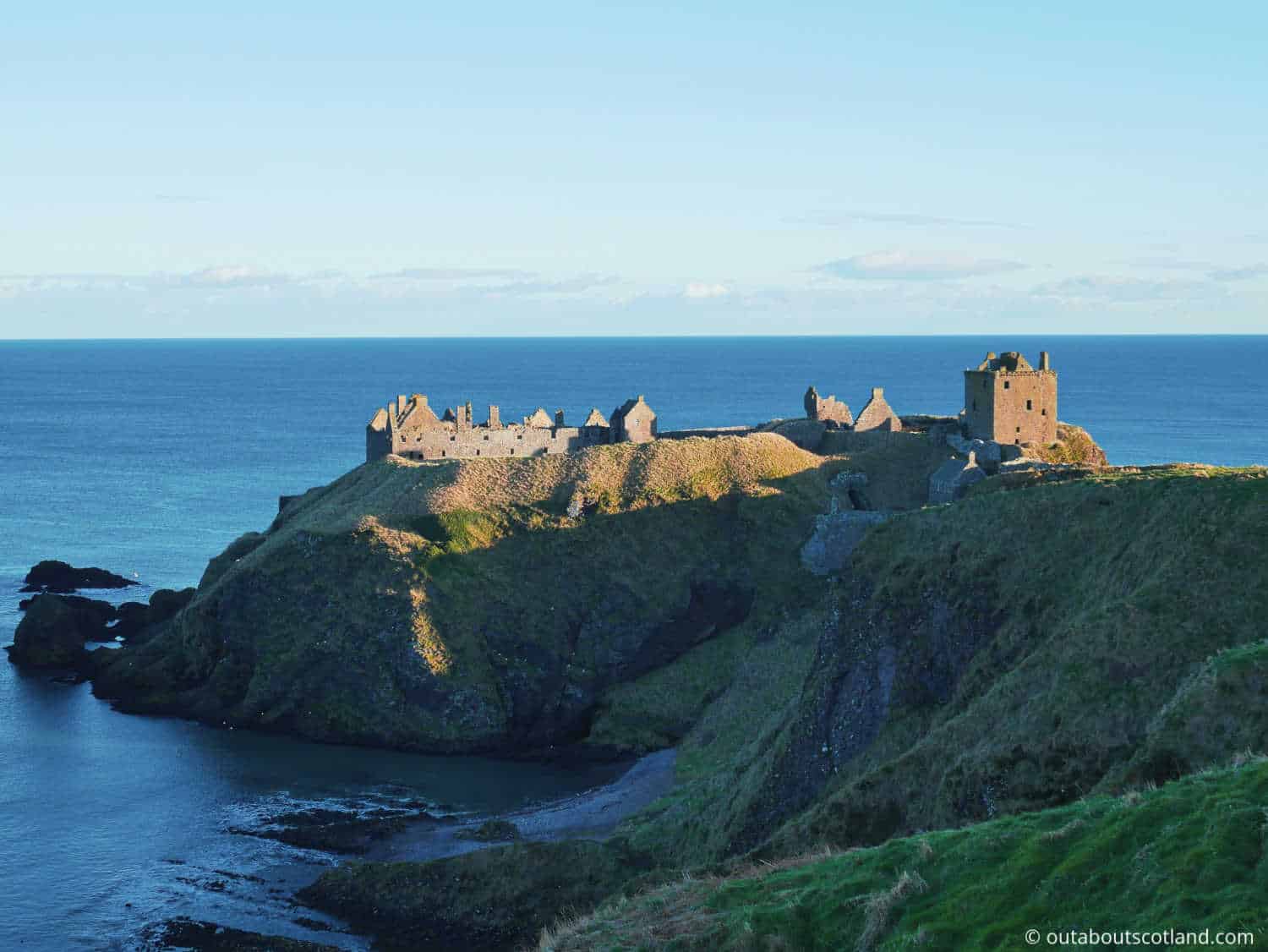
The Highlights
1: Be aware that Dunnottar Castle closes early in the winter, so you might like to check the opening times on the official website before leaving home.
2: The quadrangle, palace and tower house have lots of rooms to explore and the vaults under the palace are genuinely fascinating. Don’t forget to look in the creepy Whigs Vault.
3: This part of Aberdeenshire is famous for its fortresses, and the best way to see them is by following the Scottish castle trail. You’ll find more information in this article: The Aberdeenshire Castle Trail.
Visiting Tips
1: If you don’t want to walk all the way to Stonehaven there’s a war memorial halfway that makes a good stopping-off point. Opposite the memorial is Strathlethan Bay which often has dolphins in it. While you’re there, look for the Dunnicaer sea stack on the southern edge of the bay which is an impressive rock formation that’s a favourite nesting site for seabirds.
2: It’s an easy walk to Stonehaven from Dunnottar. The coastal path shouldn’t take more than 90 minutes to complete on a return journey, but Stonehaven has a nice waterfront that deserves a visit as well.
3: If you’re touring Aberdeenshire, I suggest avoiding the A90 and taking the A92 instead, which is designated as a coastal tourist route. This road is much slower but is far more scenic and offers superb views of the coastline and countryside.
If you’d like to see the area on a guided tour, I recommend this Dunnottar Castle and Royal Deeside tour.
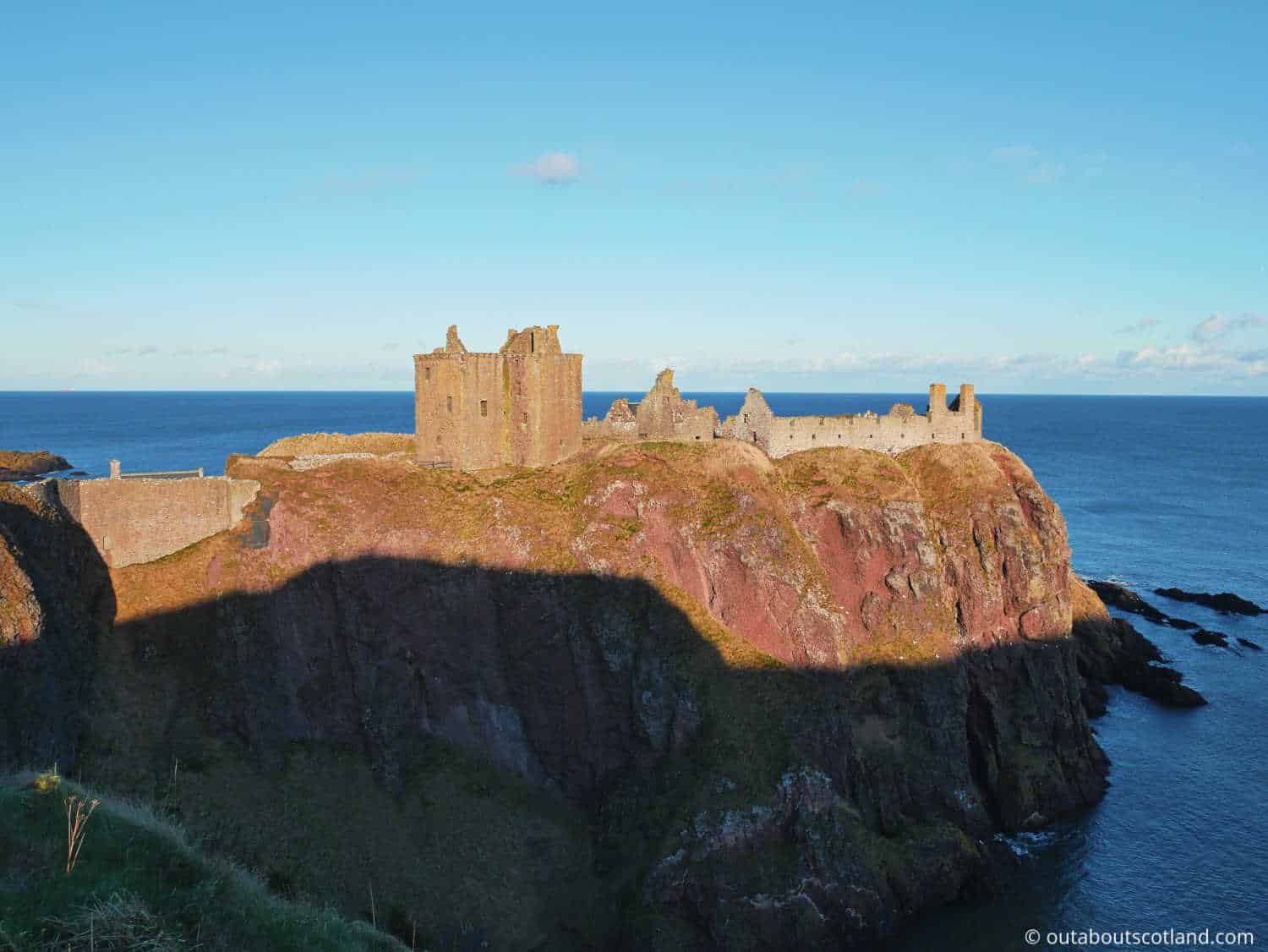
Tourist Information
This Scottish castle isn’t managed by Historic Environment Scotland, which is probably why the facilities are a wee bit lacking, but there are a few advantages that come with not being part of the enormous government-backed organisation.
As it’s not heavily advertised as a tourist attraction, it sees fewer visitors than similar-sized historic buildings, so while you’ll certainly see a few families walking about, you’ll not have to fight your way through crowds like you will at Urquhart, Edinburgh and Stirling castles. It also has cheaper entry costs, with 12-month passes costing just £25 for adults and £12 for children. The entrance fee can either be paid in advance on their website, or paid at the ticket office on the day.
As far as facilities go you’ll find toilets in the castle and a snack van in the car park, and that’s about it. There’s no café and no gift shop, but the castle more than makes up for it with its incredible location. From the car park, you’ll make your way down a path towards a viewing area where you’ll get a good overview of the western end of the fortress. From this point, you can see Old Hall Bay to the right, which has a separate path that runs a short distance onto an outcrop that offers fantastic views of the southern side of the castle.
While you’re there, keep a close eye on the beaches below as they’re a resting place for seals, while the coastal waters are a favourite spot for dolphins. If you’re a bird lover, take your binoculars because the cliffs around this area are a prime nesting site for a variety of seabirds.
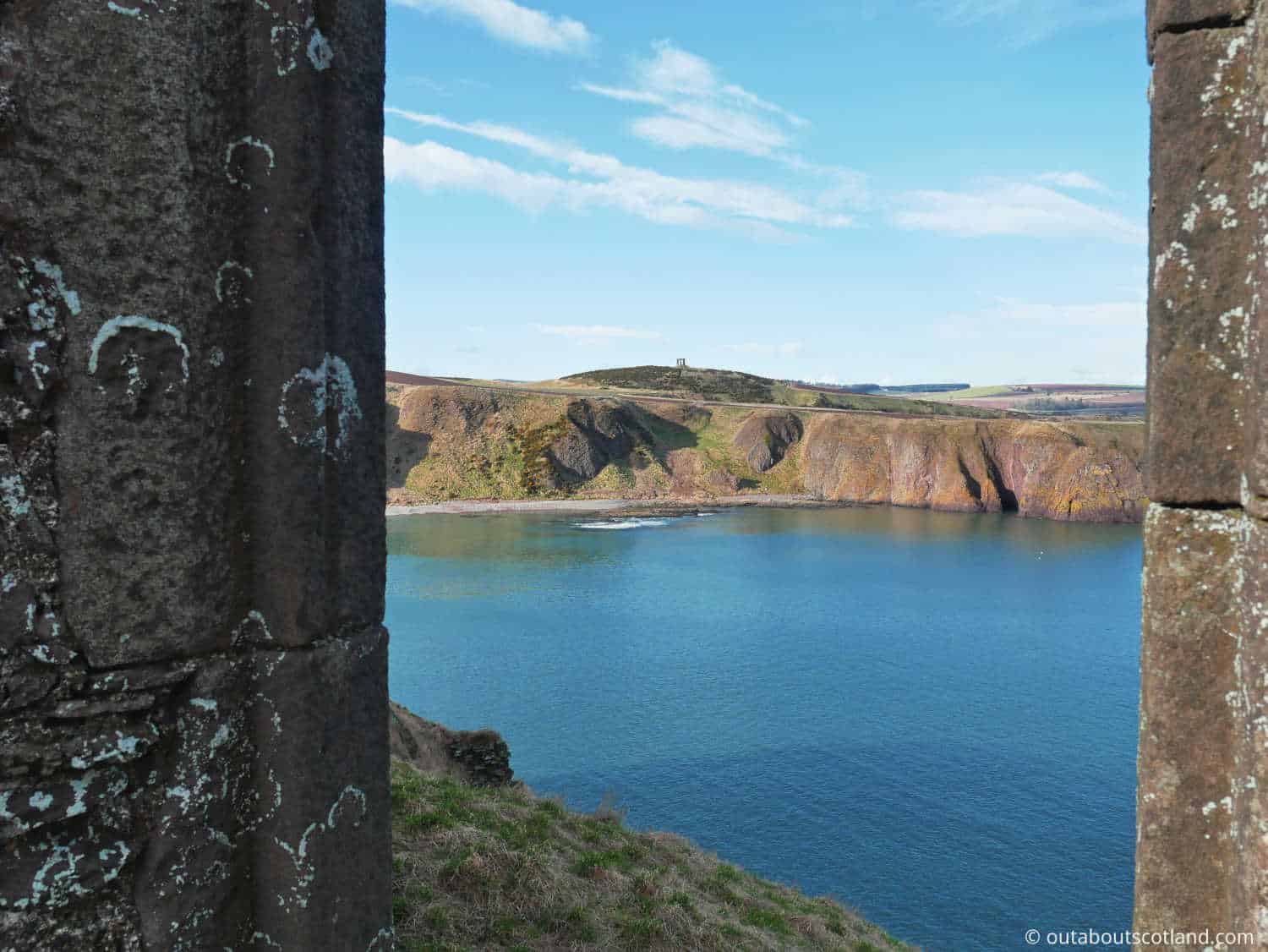
Head back to the junction where the path splits, and you’ll see that it follows the coastline towards Stonehaven. After you’ve seen the castle, I recommend taking a short walk along this path to look at the cliff faces, caves, and sea stacks leading to Stonehaven Harbour, where you’ll find a couple of pubs with outside seating overlooking the harbour and a wee beach.
First, though, is the castle, which you’ll reach by following a long, stepped path that descends down to the shoreline before rising steeply to the ticket kiosk. From there, you can explore the castle at your leisure, but there are a couple of highlights you might like to check out first.
The 15-meter 14th-century tower house is the first part of the fortress that you’ll see on your approach, and though it’s an impressive structure, it’s also completely in ruin apart from the external walls. You can wander down into the lower storehouse and blacksmith’s forge, and there are a few stairs leading up into the adjoining stable block, but the remainder of the building is sadly off-limits.
Next to the tower house are a couple of storerooms and a 16th-century building known as Waterton’s Lodging that was used as a house for the Earl Marischal’s son, next to an open stretch of grass that leads to a stunning viewpoint looking across the northern and southern bays.
Opposite the lodging is the main part of the castle – the quadrangle – which was built in the late 16th and early 17th centuries and comprises three main wings set around a courtyard with an enormous freshwater well. While most of these buildings are roofless, there are a couple that are still roofed, including the silver house on the southeast corner and the dining room and great chamber to the north.

The great chamber is accessed via a winding staircase, and it’s the only room in Dunnottar Castle that has been completely restored. It’s rather impressive with its polished wooden ceiling and ornamental carvings, so it gives you a good impression of how grand these lodgings would have looked back in the day. Beneath these rooms is a dimly lit stone corridor that has underground vaults and storerooms leading off it, and at the other end is a doorway that leads onto a path that rings the entire quadrangle.
Those underground rooms are supposedly the place where the Honours of Scotland were hidden when Cromwell pushed his army into Scotland in the 1600s. They also served as a prison for Whigs, an anti-royalist movement, who were kept at Dunnottar before being sent to the colonies in America.
I’d give yourself at least two hours for your visit, and you can easily double that if you follow the path to Stonehaven and back (more if you stop off at one of the cafés for a bite to eat). If you still have a few hours left in your day, you might consider driving 3 miles south down the A92 and heading to the RSPB Fowlsheugh Nature Reserve, which features spectacular cliffs and more than 130,000 breeding seabirds.
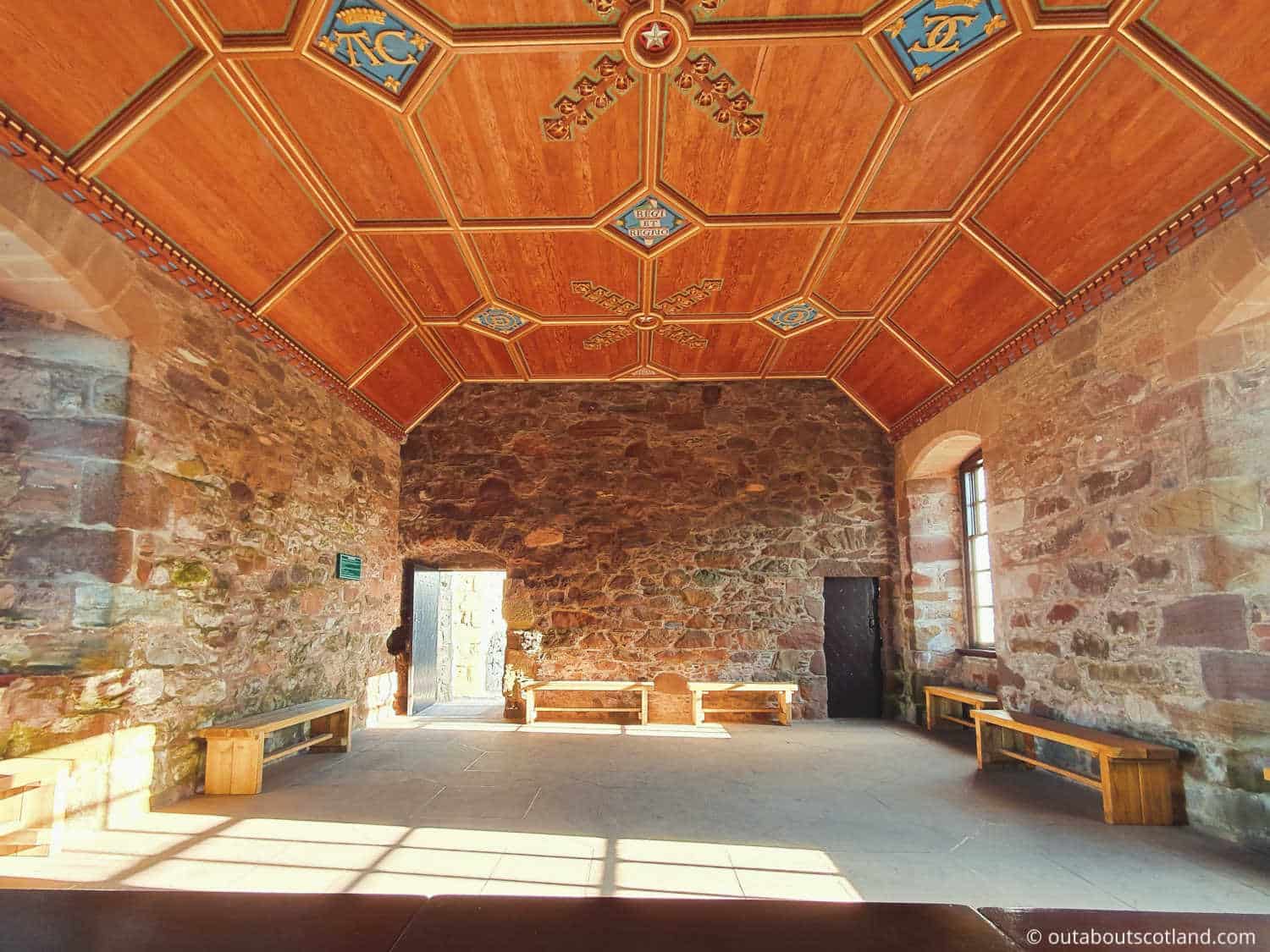
Things to Do
Historical Exploration: Delve into Scotland’s rich history as you explore Dunnottar Castle. Stand in the grand hall where Scottish nobles once dined and explore the room that once held the Honours of Scotland (the nation’s crown jewels).
Photography Outing: For photography enthusiasts, Dunnottar Castle offers stunning views of the North Sea. Capture the dramatic cliff-top setting and the castle’s ancient stone walls that take on a red hue at sunset. The golden hour is a particularly scenic time to shoot, with the twinkling waters of the North Sea framing the scene.
Nature Walks: Surrounding the castle are a number of superb walking trails with panoramic sea views. Enjoy a leisurely hike along the coastal path to Stonehaven, breathing in the fresh sea air and listening to the sound of the rolling waves.
Picnic with a View: Pack a picnic and enjoy a meal on the castle grounds overlooking the sea. There are several grassy spots that are perfect for laying out a blanket and unpacking a picnic hamper. Alternatively, head back to the car park and grab a coffee from the snack van.
Ghost hunting: According to legend, a man in green and a girl wearing a plaid dress are among the ghosts who haunt Dunnottar Castle. If you’re a fan of the supernatural, visit when the light dims and try to spot these spectral figures yourself. Just be sure to bring a torch for those dark corners!
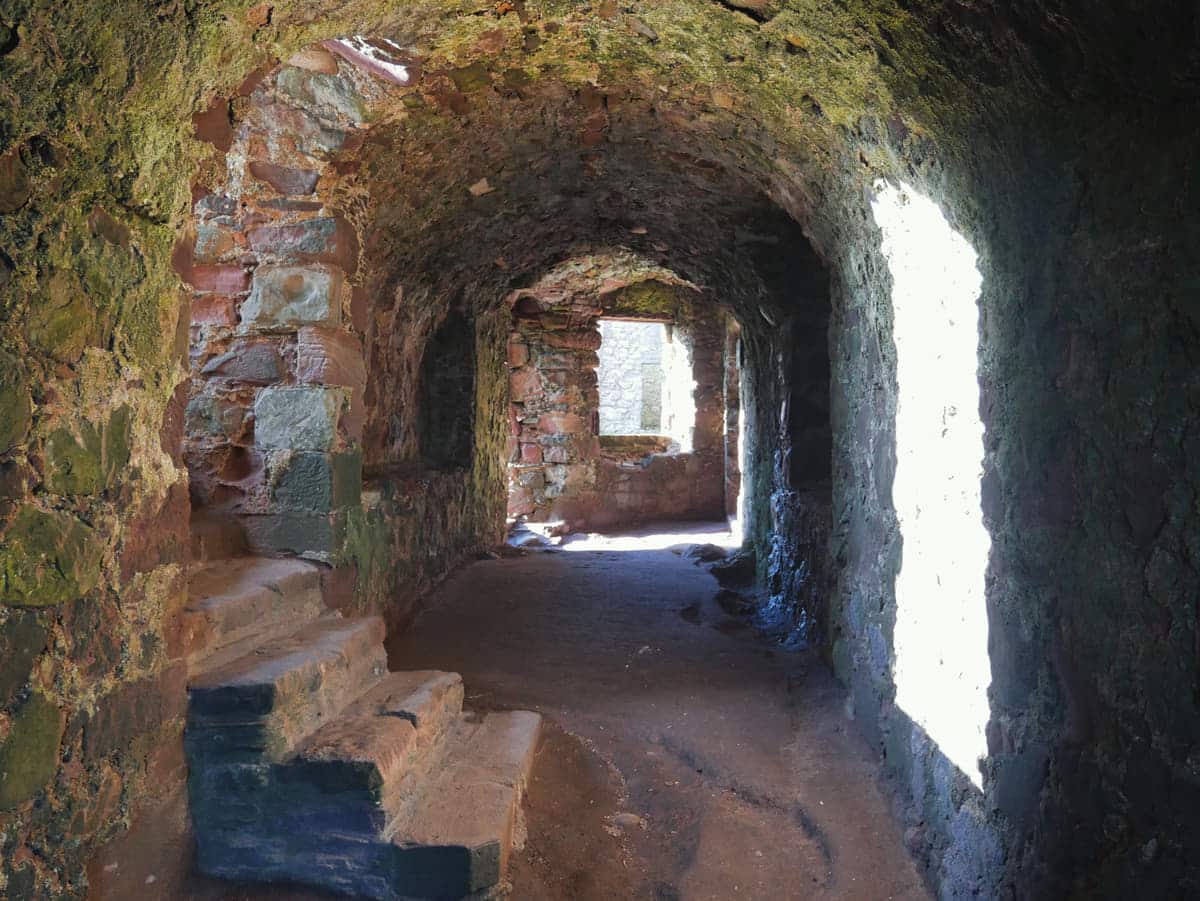
Things to Do Nearby
Stonehaven War Memorial. Stonehaven AB39 2TJ. 25-minute walk.
A large war memorial in a raised position overlooking Stonehaven Bay. The memorial is open to the public and can be accessed on a gravel path from either Stonehaven or Dunnottar Castle.
Dunnicaer Sea Stack and Strathlethan Bay. Stonehaven AB39 2TJ. 16-minute walk.
Due to the abundance of seabirds that forage for fish in the nearby waters, bird-spotters frequently visit this bay that overlooks the North Sea. The sea stacks are impressive but are not easily accessed from the Dunnottar to Stonehaven path.
RSPB Fowlsheugh. Crawton, Stonehaven AB39 2TP. 5-minute drive.
This is one of Scotland’s top wildlife-spotting sites. Home to guillemots, razorbills, puffins and fulmars. Pleasant walks can be accessed along the clifftops where you will often see grey seals and dolphins in the water below.
Stonehaven and Stonehaven Bay. Stonehaven AB39 2BD. 40-minute walk.
Stonehaven is a quiet fishing town that is better known for its shingle beachfront and windswept bay that offers picturesque walks along the seafront. The town has a selection of eateries within walking distance of the beach.
Dunnottar Woods. Dunnottar Church, Stonehaven AB39 3UJ. 3-minute drive.
A small woodland that’s the location of Lady Kennedy’s Bath – a historic landmark that is a stone-built bath set in the bed of the Glaslaw Burn. Often used as the starting point for the Dunnottar Red Trail which is a 1 1/2 mile woodland walk.
Frequently Asked Questions
What is Dunnottar Castle famous for?
Aside from being one of the most scenic castles in Scotland, Dunnottar Castle is known as being the refuge where Scotland’s crown jewels – the Honours of Scotland – were hidden from the army of Oliver Cromwell in the 17th century.
Is Dunnottar Castle free?
Dunnottar Castle is privately owned and is not free to visit. See the Dunnottar Castle website for the latest entry prices.
Who has lived in Dunnottar Castle?
Dunnottar Castle was the seat of power for the Earls Marischal of Clan Keith. It was later sold to the York Mining Company in 1717 and sold again to Lord and Lady Cowdray in 1919.
What has been filmed at Dunnottar Castle?
Dunnottar Castle has been featured in several movies and TV programmes over the years, including:
Hamlet – 1990.
Victor Frankenstein – 2015.
Mary Queen of Scots – 2013.
The Amazing Race – 2001.
The World from Above – 2010.
Is Dunnottar Castle pushchair friendly?
Dunnottar Castle is not pushchair friendly as the entrance is only accessed via a steep set of narrow steps.






